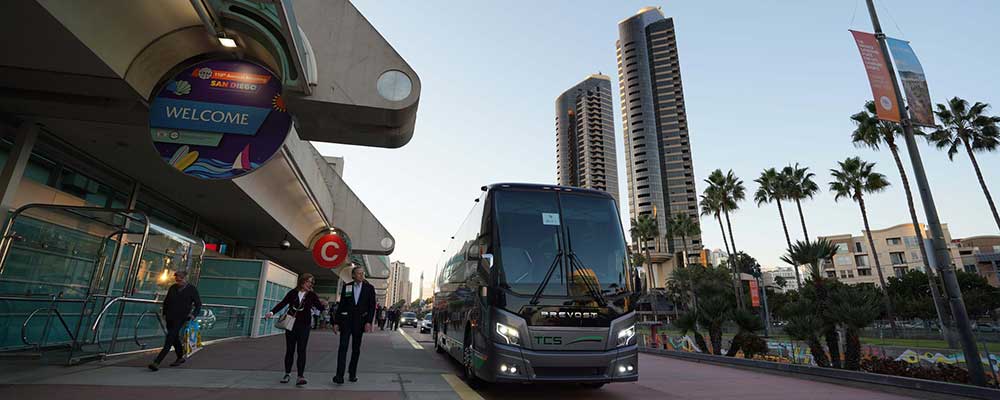Top 10 Tips For The Capacity And Selection Of Shuttle Services For Employees
Here are 10 helpful tips to select the ideal vehicle and capacity for your employee shuttle service:
1. Think about the needs of your employees for transportation.
Review your current employee count and estimate how many will use the shuttle on a regular basis. Consider factors such as the number of employees in your company as well as the shifts that are scheduled for work and the peak times for usage. This information can assist you in selecting the right vehicle capacity, and ensure your shuttles are able to handle a wide range of passengers.
2. Select the right vehicle type
Based on the amount of employees as well as their particular needs, choose vehicles that best fit your shuttle service. You can choose from minibuses or larger buses. Minibuses are ideal for smaller groups as they are able to fit into smaller places, while large buses are ideal for larger groups. Take into consideration the layout of the vehicle and if it offers adequate seating and space for luggage if employees travel with bags or equipment.
3. Evaluate Fuel Efficiency
Costs for fuel can be a major factor in the total cost of shuttle services. Make sure to choose fuel-efficient vehicles in order to cut down on operating costs. Think about electric or hybrid cars since they can provide long-term savings and also meet sustainability goals. Examining the efficiency of fuel in various models will help to make an educated decision that balances capacity with cost-effectiveness.
4. Consider Accessibility features
Be sure that the vehicle you pick are compatible with accessibility standards for employees who have disabilities. It includes features like wheelchair lifts, lower floors to make it easier for those with mobility issues to access the vehicle, and special seating designated for those with mobility issues. The provision of accessible transportation not only complies with the law as well as promotes an inclusive work environment.
5. Plan for Growth and Flexibility
As organizations evolve as do the sizes of their workforces. Consider the possibility of growth to come when selecting a vehicle. When selecting vehicles, take into consideration the potential for future growth.
6. Find safety ratings, features and reviews
Safety is a top priority in the transportation of employees. Research the safety attributes and rating of vehicles before deciding which one to choose. Look for vehicles with advanced security features such as anti-lock braking systems, stability controls, and collision-prevention systems. Check that the vehicle complies with the federal and local standards to ensure safety for your employees.
7. Examine reliability and maintenance
Think about vehicles with low maintenance costs and reliability. If your vehicle requires frequent maintenance can lead to disruption to shuttle services and employee dissatisfaction. You can also establish a maintenance plan to ensure that vehicles are in good conditions and prolong their life.
8. GPS and Fleet Management Software
The implementation of GPS and fleet management software will increase the efficiency of your shuttle service. These tools enable live tracking of vehicles, which allows for optimal routes to be developed based on the weather conditions or schedules of employees. Fleet management software can help monitor the efficiency of vehicles and consumption of fuel, as well as maintenance requirements to ensure the vehicles are used effectively.
9. Set up employee feedback mechanisms
Engage your employees with surveys or suggestion bins that give feedback on the comfort of your vehicle. Knowing their experiences will help you identify issues with overcrowding and seating accessibility issues. Monitoring feedback from passengers will assist in making the necessary modifications to vehicle choices or service to ensure a pleasant transportation experience.
10. Total cost of ownership Budgeting for the total cost
TCO is a measurement of the total cost of owning an automobile. It includes fuel costs, depreciation, maintenance, and insurance. TCO can help you make educated choices that take into account long-term costs as well as initial investments. The cost of a vehicle can be analyzed to determine if it meets the budget while maintaining its reliability and capability.
With these suggestions companies can select the right vehicles and plan the amount of shuttles for employees to ensure a secure, comfortable, and efficient service that is able to meet the requirements of their employees. Have a look at the top the original source on employee shuttle for website info including miami airport transportation, shuttle service from the airport, shuttle service near me, miami airport transportation, san francisco airport shuttle service to hotels, airporter bus, shuttle to and from airport, transportation for airport, car service to airport, airport service and more.

10 Ways To Improve The Customer Service And Communications Of A Corporate Transportation Service
Here are the top 10 tips to improve customer service and communications within a transportation company.
1. Set up a Transportation Coordinator
Appoint a transportation coordinator to handle all aspects relating to the transportation of your event. This individual should be the primary point of contact for all transportation-related inquiries, ensuring that attendees have access to timely and accurate information. With a designated coordinator, you can enhance the customer experience and speed up communications.
2. Information that is clear and complete
Be sure that guests are aware of all pertinent transportation information in plenty of time before the event. Include information about the pickup location, vehicle types, schedules, and the contact information of the coordinator for transportation. This will help attendees better plan their travel plans and reduce confusion on the actual day.
3. Utilize Multiple Communication Channels
Use a variety of communication channels to reach attendees, such as emails, mobile apps, event websites as well as printed materials. The preferences of attendees in communication may differ, and using multiple channels improves the chance that everyone will be informed.
4. Create a Transportation FAQ
Create a document that contains frequently asked (FAQ) questions, which covers common transportation issues and questions. The document should contain pertinent information such as accessibility, lost objects or emergency contacts, among other pertinent topics. An FAQ will significantly decrease the number of requests and enhance the overall customer service experience.
5. Offer Real Time Updates
Set up a system to provide attendees with real-time updates on transport schedules and any possible changes. This can be done through SMS message alerts or through notifications in apps for smartphones. Updates in real-time keep people informed and allow them to control expectations, especially in cases where delays might occur.
6. Train Drivers in Customer Service Skills for Customer Service
Drivers should be trained in all aspects of customer care and also the necessary skills for driving. Drivers should be pleasant and approachable, as well as well-informed about the event. Positive interactions between drivers and guests can improve their overall experience, making them feel appreciated.
7. Take notes during the event.
Provide attendees with an opportunity to offer feedback on the transportation at the event. This can be done through quick surveys, comment cards, or informal conversations. This lets you implement immediate changes and show your commitment to improve customer service.
8. Ensure accessibility for all attendees
Make clear the accessibility features offered by the program. Ensure that vehicles are equipped to meet the needs of people who have disabilities. Also, make sure that information regarding accessibility options is easily accessible. By prioritizing accessibility by focusing on accessibility, you show your commitment to inclusiveness and enhance the experience for all attendees.
9. Follow-up after the Event
Following the event, be sure to thank the attendees for their participation. Also invite them to provide feedback about their transport experience. This can be done through email surveys and thank-you notes. By following up, you are showing your attendees that you appreciate and value their opinions.
10. Document Lessons for Future Events
After gathering feedback, document the lessons you learned about communication and customer service to be able to refer back later. Analyze your feedback to determine the things that went well and the areas that could be improved. Then, use this information to help you improve your approach to future events. The continuous improvement of customer service will improve the experience of attendees and improve overall satisfaction.
With these strategies companies can dramatically improve the customer experience and communications in their corporate event transport services. A clear and concise communication strategy as well as a dedicated customer service and a responsive feedback system will ensure an enjoyable, seamless experience for guests attending the event. A high-quality customer service can set an organization apart in a highly competitive market. This will build long-lasting connections and improve the overall experience of attendees. View the top rated straight from the source on corporate event transportation for blog advice including plan logistics, transport systems, transportation industry, transportation management system, global logistics company, transport and logistics, specialized transportation inc, transport and logistics, best transport, transportation companies near me and more.

Comments on “20 Good Reasons For Deciding On Event Transportation Sites”